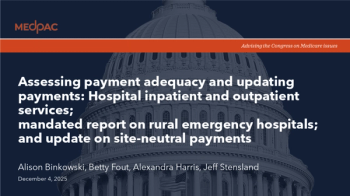
Hospitals are doubling down on primary care, but they can’t find enough physicians
Key Takeaways
- Health systems are expanding primary care to improve clinical outcomes, manage costs, and transition to value-based care models.
- Workforce shortages are a major concern, with physician recruitment and retention as top priorities for health executives.
Bain & Company finds hospitals accelerating investment in primary care and value-based care, even as labor shortages and patient skepticism over AI threaten progress.
U.S. health systems are making primary care a strategic priority, positioning it as the foundation of care delivery, patient experience and cost management, according to Bain & Company’s
“The ambition around primary care is clear: health systems are betting on it as a cornerstone of strategy,” said Erin Morrissette, M.D., partner in Bain & Company’s Healthcare & Life Sciences practice. “Our research shows that can navigate workforce shortages, reimagine care models and
Long undervalued within health networks, primary care is now being recognized as essential to population health management, cost control and value-based care.
Executives ranked improving clinical outcomes and managing medical costs among their top reasons for expanding primary care. Driving referrals fell to the bottom of the list.
From fee-for-service to value-based models
Although most systems still rely heavily on fee-for-service reimbursement, Bain found growing momentum toward population-based and value-based care. Executives anticipate a notable shift in payment models and clinic design within the next five to seven years, with health systems building out population-focused primary care centers that emphasize preventive care, chronic condition management and patient engagement.
Health systems view primary care as key to both financial sustainability and community impact — an evolution from its historic role as the “front door” of care.
Workforce shortages remain the biggest threats
Despite the optimism surrounding new models, labor remains the greatest constraint. Leaders surveyed ranked
The rise of AI vs. the staying power of physicians
Patient comfort with AI tools is also on the rise, though unevenly.
In Bain’s companion consumer survey, 60% of patients said they are comfortable with AI listening and taking notes during visits — up from 21% in 2024 — but only 34% are comfortable with AI making a diagnosis, and just 28% with AI serving as their physician.
AI is emerging as a key support tool, rather than a substitute for physicians. Health systems integrating it effectively could help physicians spend more time with patients and less time on administrative tasks.
Looking ahead
As health systems continue to invest in technology and team-based models, Bain’s findings suggest that primary care’s role is expanding beyond coordination to leadership. Those able to balance workforce realities, patient expectations and responsible AI adoption will likely shape the next era of health care.
Newsletter
Stay informed and empowered with Medical Economics enewsletter, delivering expert insights, financial strategies, practice management tips and technology trends — tailored for today’s physicians.
















